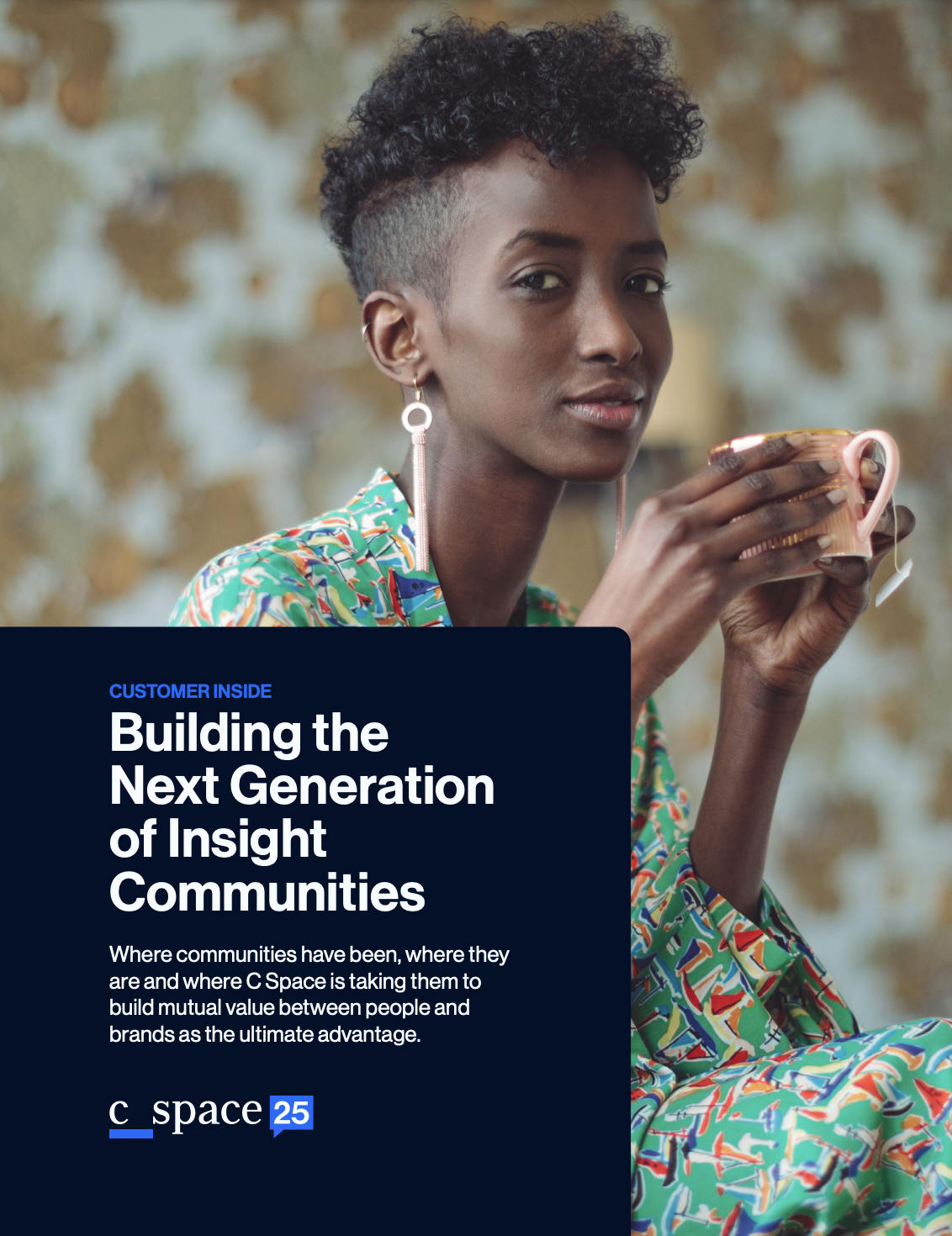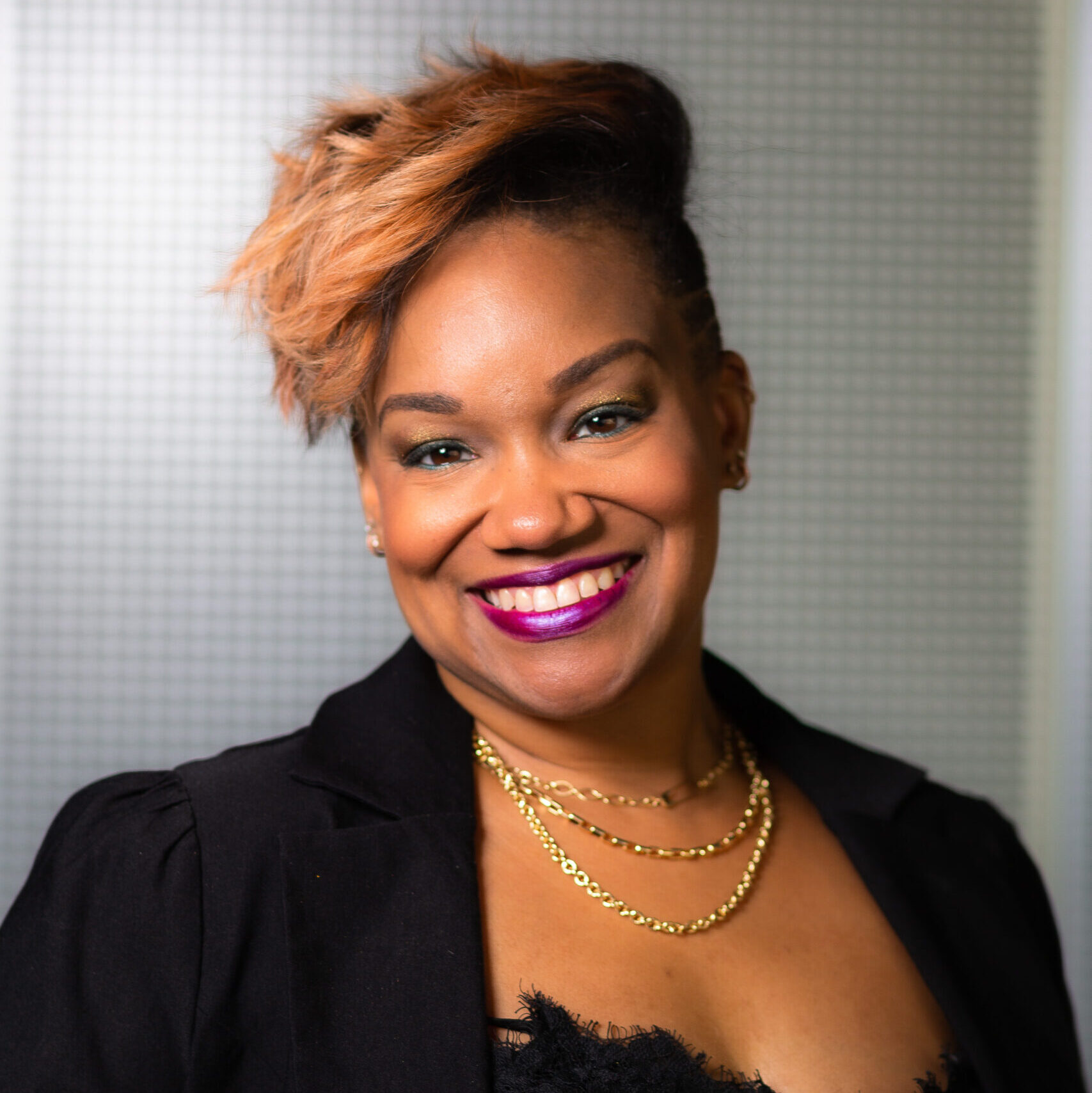ARTICLE
How to talk about DEI without talking about DEI: Leveraging inclusive strategy & cultural intelligence
by Kisha Payton, Head of DEI, Escalent and Neha Mittal, Inclusive Design Lead, C Space EMEA

This article is part of a year-long, 25th anniversary series that explores where insight communities have been, where they are today, and the market and customer trends that are shaping where C Space is taking insight communities next.
Why the world’s boldest brands are doubling down on inclusion-even if they never say the words “Diversity, Equity and Inclusion”.
Across continents and cultures, brands are facing a defining moment: How do we build a future that welcomes everyone-without alienating customers and shareholders, sparking backlash, or getting lost in translation?
Let’s be honest: “DEI” (Diversity, Equity and Inclusion) has become a lightning rod. In some regions, it’s a rallying cry; in others, it’s a red flag. Many boardrooms are quietly retiring the phrase, but the most forward-thinking brands aren’t retreating. They’re embedding cultural intelligence and inclusion into every decision, every product, every experience-because they know it’s the only way to stay relevant in a fractured, fast-changing world.
As Jon Moeller, CEO of Procter & Gamble, says:
“Equality and inclusion is good for our business … this cannot and will not change. It’s critical to who we are and what we do, to our principles, values and purpose and, most importantly, to winning.”
This isn’t just a moral stance. It’s a global brand growth strategy grounded in inclusive customer insights. At C Space we see this as a standard from which the world’s best brands are starting to lead:

Equality and inclusion is good for our business … this cannot and will not change. It’s critical to who we are and what we do, to our principles, values and purpose and, most importantly, to winning.
– Jon Moeller, CEO of Procter & Gamble
1) Build for tomorrow’s world, not yesterday’s borders
The next wave of growth won’t come from the “average” customer-it will come from the billions who have been overlooked by geography, language, identity, or ability.
– In Africa, mobile money platforms like M-Pesa have revolutionized financial inclusion, bringing banking to people who never had access before.
– In Southeast Asia, Grab has evolved from a ride-hailing app to a culturally intelligent super-app, serving everyone from rural farmers to urban professionals, in dozens of languages and currencies.
– In Europe, IKEA has reimagined its stores and products for smaller urban homes, reflecting the realities of city living and diverse family structures.
If your brand strategy is still built around a single, monolithic customer, you’re building for a world that no longer exists.
Ask yourself:
– Are your products and experiences truly reflecting the full spectrum of backgrounds, abilities and needs in society?
– Are you actively engaging underserved communities for insights, letting their voices shape what you offer?
– Is your pricing, distribution and service accessible to those who have historically been excluded?
2) Design for the edges, win the world
“Inclusive design” isn’t a buzzword-it’s a competitive advantage. When you solve for the margins, you often create better experiences for everyone.
– OXO’s kitchen tools were designed for people with arthritis, but now they’re loved by cooks everywhere.
– India’s UPI and Paytm brought digital payments to millions who had never used a bank-now they’re the backbone of a cashless economy.
– Unilever’s Sunsilk partnered with women in Brazil, India and Southeast Asia to design haircare for local textures, climates and beauty ideals-making the brand an inclusive market leader on three continents.
What starts as a solution for the few often becomes a win for the many.
Ask yourself:
– Are your digital and physical experiences and products accessible to all, from low-bandwidth users in rural China to visually impaired customers in Germany?
– Are your consumer research and feedback loops amplifying every voice-or just echoing the usual suspects?
3) Lead with inclusive values-and live them globally
In a polarized world, brands are under pressure to pick sides. The ones that endure aren’t reactive-they’re anchored by a clear sense of purpose and built on inclusive culture.
– Ben & Jerry’s stands up for social justice, even when it means facing criticism or boycotts. Their values are baked into every flavor, partnership and campaign.
– Fabindia in India stood by its commitment to pluralism and diversity, even when its “Jashn-e-Riwaaz” campaign faced political backlash.
– LEGO has championed neurodiversity, launching Braille Bricks and autism-friendly play sets in markets from Denmark to Japan.
Ask yourself:
– Are your values just words on a wall, or are they the backbone of your decisions-even when the heat is on?
4) Your people are the ultimate disruptors
Innovation doesn’t come from echo chambers. It comes from teams where every voice-from the quietest to the boldest, from the front lines to the boardroom-feels empowered to challenge, create and lead.
– Microsoft’s global teams have driven accessibility breakthroughs, from adaptive controllers to AI-powered translation, because employees with lived experience were at the table.
– L’Oréal’s multicultural teams have created products for every skin tone, making the brand a beauty leader in over 150 countries.
– Shoprite in South Africa employs people from diverse backgrounds and languages, helping the retailer serve communities in ways competitors can’t.
When employees feel seen, valued and included, they become your most powerful source of growth, loyalty and innovation.
Ask yourself:
– Are your internal policies and practices as inclusive as your customer-facing ones?
– Are you actively seeking out and listening to the perspectives of employees from all backgrounds, levels and regions?
- Do your people feel safe to challenge the status quo, share bold ideas and question groupthink?
- Are your hiring, promotion and leadership pipelines open to all—not just the usual suspects?
- Do you celebrate and leverage the unique strengths and lived experiences of your teams across the globe?
- When was the last time an employee’s insight led to a breakthrough for your organization?
The world is changing. Will you change with it?
Inclusion isn’t a slogan-it’s a survival strategy. Whether or not you use the language of DEI, the brands that thrive will be those bold enough to put inclusion at the heart of their teams, products and culture.
That’s why we at C Space created our Cultural Intelligence (CI) offering: to help brands and teams like yours navigate complexity with clarity, courage and heart. From inclusive research and team training to hands-on advisory, we help you design for the real world-not just the ideal customer on a slide.
Ready to future-proof your brand with inclusive strategies that unlock the full power of your people? Let’s build what’s next together.





